30 New Storage Products Partners Can Use For Cloud Or Virtualized Environments
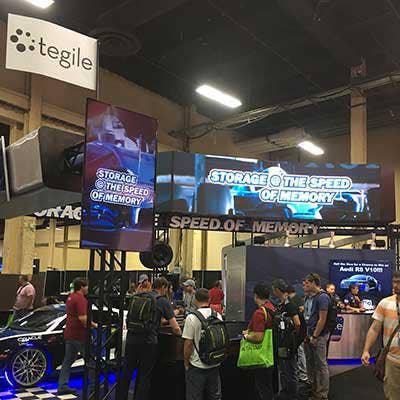
The Storage Factor For Cloud Or Virtualized Environments
VMware's VMworld 2017 featured plenty of technology advances in virtualized and cloud environments, but the show's solutions pavilion was a hotbed of cutting-edge storage tech.
Every major and many secondary storage vendors were at the event to show their latest offerings ranging from traditional storage arrays and components to the latest in all-flash storage, cloud storage, and software-defined storage. Visitors got demonstrations of the products along with their T-shirts and other swag, including trinkets from Tegile (pictured) which may have made its last appearance as an independent company since Western Digital later the acquisition of Tegile during VMworld.
Ready to be impressed? Turn the page for a real feast of storage at VMworld 2017.
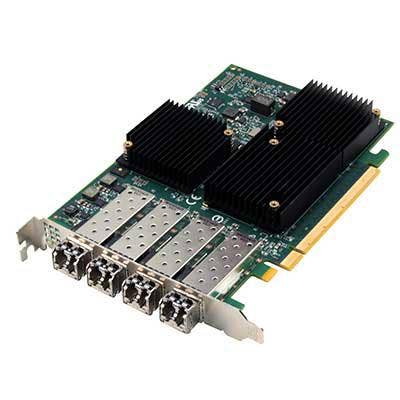
Atto Quad-port Celerity HBAs
The new Atto Celerity 32-Gb Gen 6 quad-port host bus adapters (HBAs) from Amherst, N.Y.-based Atto Technology leverage two next-generation storage technologies–PCIe 3.0 interconnect and 32-Gb Fibre Channel--to provide a storage connectivity offering with high-performance, intelligence, and scalability. The Celerity FC-324E 32 Gbits-per-second dual-channel HBAs deliver up to 6,400 MB-per-second using a single PCIe slot. Intelligence to the edge of the SAN is provided by Atto's Advanced Data Streaming technology, while the company's vConfigTool allows management, management, monitoring, and configuration via an intuitive GUI. The new HBAs are available starting this month.
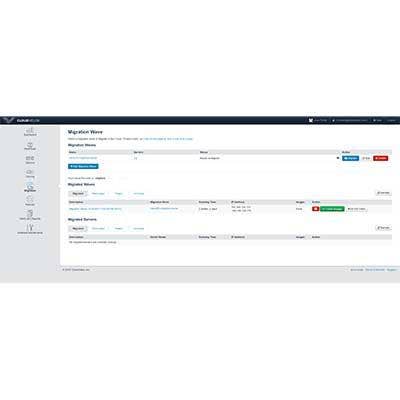
CloudVelox One Hybrid Cloud 5.0
CloudVelox One Hybrid Cloud provides comprehensive cloud recovery solution for business and mission-critical workloads. Santa Clara, Calif.-based CloudVelox said the One Hybrid Cloud offers an alternative to traditional disaster recovery solutions that come with heightened business and technical challenges.
New to One Hybrid Cloud 5.0 is the ability to set a minimum footprint in the cloud for a low-cost disaster recovery capability without the need for extra equipment or staff, single-click initiation and single-click cleaning up of disaster recovery testing, application-centric disaster recoveries, low-cost AWS region-to-region disaster recovery, and encryption of data in-flight and at-rest.
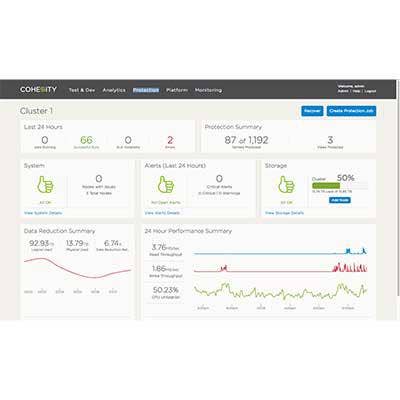
Cohesity Orion 5.0
Cohesity Orion brings together release 5.0 of Cohesity's DataPlatform and DataProtect technologies to provide a hyper-converged secondary-storage platform that consolidates data protection and big data repositories on one scalable infrastructure. Santa Clara, Calif.-based Cohesity said this enterprise-class, all-in-one platform simplifies storage administration, reduces data copies, speeds data retrieval, and reduces total cost of ownership.
New features include multi-protocol access including NFS, SMB, and S3 for unstructured data; C3000 dense nodes for large content repositories or data protection workloads requiring the lowest cost-per-terabyte; S3 object storage de-duplication; global indexing and search for rapid data retrieval; NAS backup support for NetApp, EMC Isilon and Pure Storage FlashBlade; and any-point-in-time, instant restores at scale.
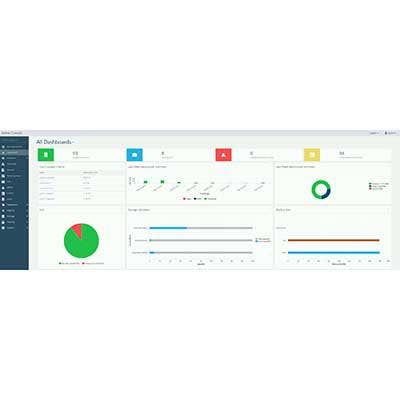
Commvault HyperScale Software
Triton Falls, N.J. used VMworld to unveil Commvault HyperScale Software, a new cloud-ready data management application that extends beyond the company's traditional data protection and management capabilities to let businesses gain cloud-like simplicity, elasticity, resiliency, flexibility, and scale for secondary storage. It includes active copy management and hardware snapshot integration, and supports applications for physical, virtual, and cloud platforms along with service license agreement-based policies. Also included is a sophisticated orchestration engine, programmable APIs, and direct data access through standard interfaces.
The software is currently shipping, and an appliance version integrating the compute, storage, and Commvault Data Platform software for scale-out infrastructures is slated to be available soon.
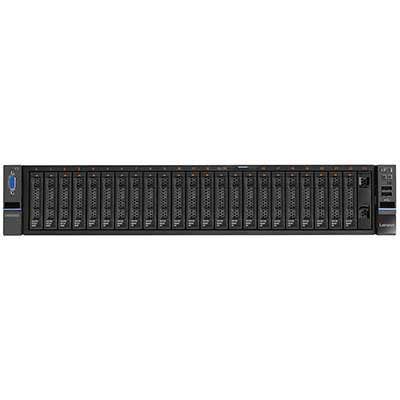
DataCore Behind The Lenovo DX8200D
DataCore's SANsymphony storage virtualization software and multi-core optimizing parallel I/O is the power behind Lenovo's new DX8200D turnkey software-defined storage appliance. Ft. Lauderdale, Fla.-based DataCore's SANsymphony software is targeted at data center administrators looking to unify and simplify their VMware vSphere-based storage environments.
SANsymphony is a VMware-certified software supporting universal VVOLs functionality that can manage multiple storage devices across different locations with a single set of enterprise-wide services. The software pools and centrally manages collective resources from multiple manufacturers and multiple generations of equipment.
The Lenovo DX8200D Powered by DataCore was recently enhanced with new Fibre Channel connectivity for high-performance tier-one applications as well as new capacity scalability via JBOD storage arrays.
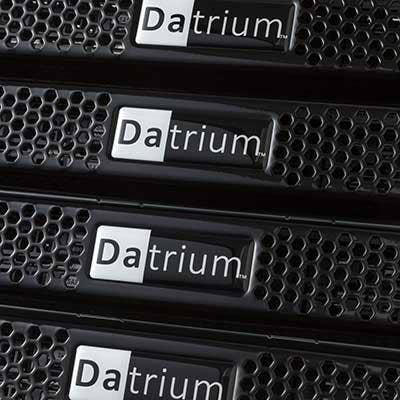
Datrium DVX Split Provisioning
Datrium's DVX technology competes with hyper-converged infrastructure by pooling the standard NVMe flash memory inside up to 32 industry-standard servers, or compute nodes, to a networked data node. In August, the Sunnyvale, Calif.-based company introduced DVX Split Provisioning which, combined with its DVX 3.0 software, allows DVX to scale to up to 128 compute nodes and 10 data nodes in a single system, which the company claimed is ten times larger than most hyper-converged clusters.
With DVX Split Provisioning, DVX performance and capacity increases to up to 200 GBs per second read bandwidth and 18 million IOPS, 8 GBs per second write throughput and 1.7 petabytes of effective capacity.
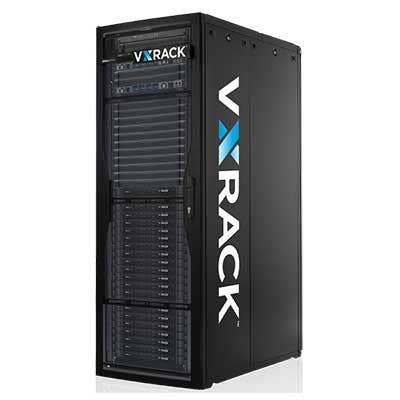
Dell EMC VxRack SDDC And Other Updates
Dell EMC used VMworld to introduce a number of updates to its storage and hyper-converged infrastructure offerings including its VxRack SDDC, a new rack-scale hyper-converged infrastructure product jointly developed with VMware to deliver tight integration with VMware Cloud Foundation for automation and lifecycle management of the latest VMware software including vSphere 6.5, vSAN 6.6, and NSX 6.3.
The company also enhanced version 4.5 of its VxRail appliances with enhanced enterprise deployment and improved interoperability with the latest vSphere 6.5 and vSAN 6.6. The Dell EMC Data Protection Suite for Applications, targeted at mission-critical SQL and Oracle databases and VMware environments, now offers automatically discovers databases, storage, and virtual machines. The company also showed its new Dell EMC XtremIO X2 all-flash array with up to 5.5 petabytes of effective capacity.
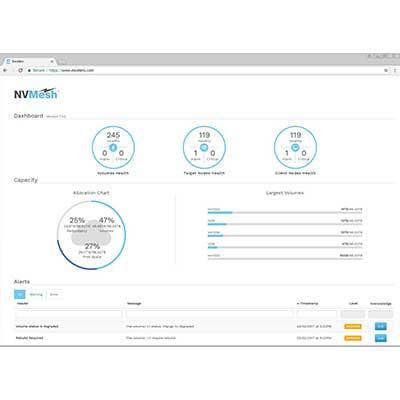
Excelero NVMesh
Excelero, San Jose, Calif., used VMworld to show its NVMesh software-defined block storage offering that allows unmodified applications to take advantage of NVMe across a network at local speeds and latencies. NVMesh pools distributed NVMe storage resources to create arbitrary, dynamic block volumes usable by any host running the NVMesh block client. These virtual volumes can be striped or mirrored, or both, while being centralized managed, which the company said provides the latency, throughput, and IOPs of local NVMe devices with the benefits of centralized, redundant storage. It includes Remote Direct Drive Access (RDDA) functionality to bypass the CPU and help avoid "noisy neighbors" issues.
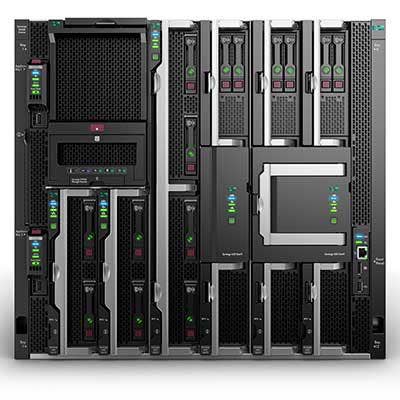
Hewlett Packard Enterprise Synergy with VMWare Cloud Foundation
HPE used VMworld to unveil what it called the industry’s first composable platform for VMware Cloud Foundation, based on HPE Synergy. HPE Synergy with VMware Cloud Foundation is aimed at consolidating traditional, private, and cloud-native workloads onto a single integrated infrastructure platform. It lets customers deploy IaaS and private clouds in minutes while reducing virtual machine costs compared to public clouds and traditional server racks, HPE said.
With HPE Synergy powered by VMware Cloud Foundation, customers get a single platform to run bare metal, virtualized SAN-based environments, and vSAN-based workloads. When combined with HPE Flex Capacity, it lets customers scale-up and scale-down capacity as needed while paying only for the resources they consume.
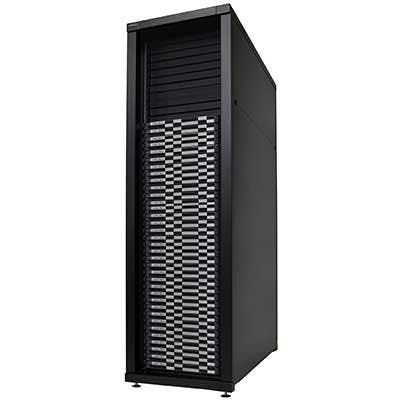
Hitachi Vantara UCP RS
The UCP RS is an integrated software-defined data center cloud infrastructure offering from Santa Clara, Calif.-based Hitachi Vantara, formerly known as Hitachi Data Systems. It is targeted at accelerating hybrid clouds for business agility and simplifying operations. The UCP RS natively integrates software-defined compute, storage, and networking into an end-to-end software-defined data center with up to 256 nodes for an enterprise-scale cloud platform. It lets businesses leverage private and public clouds without re-platforming applications. Unified management tools automate the provisioning, configuration, managing, and monitoring of the entire stack. Resources are consumed in a new construct known as workload domains, which Hitachi Vantara HDS said provide isolated virtual data centers for multi-tenancy scenarios.
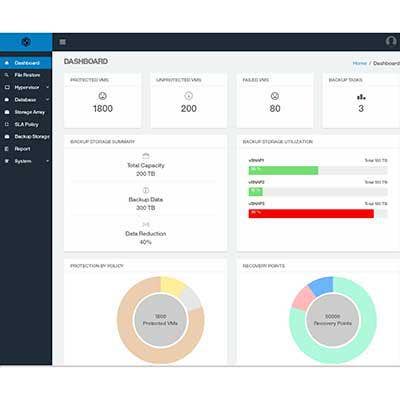
IBM Spectrum Protect Plus
IBM’s Spectrum Protect Plus is a new data protection and application availability solution targeting virtual machine and applications environments. It was designed to be easily and quickly deployed to protect client environments within an hour. With Spectrum Protect Plus, IBM is providing an integrated approach for customers who currently use multiple backup products for mission-critical environments and virtual machines. It provides a single view of the backup and recovery status across the data portfolio and eliminates silos of data backup and recovery. SLA management and integration with IBM Spectrum Protect creates consultative opportunities for data governance, regulatory requirements, bare metal and legacy data protection, and hybrid cloud integration all in a single solution.
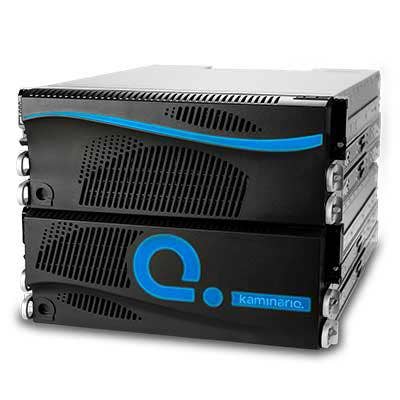
Kaminario K2.N
The Kaminario K2.N from Kaminario, a Needham, Mass.-based developer of all-flash storage arrays, is an end-to-end NVMe-based all-flash array with scale-out, active-active capability with NVMeF Fibre Channel and iSCSI front-end connectivity and a backend based on converged Ethernet and NVMe over fabric (NVMeF).
Kaminario K2.N is bundled with Kaminario Flex, a software platform for managing composable storage infrastructures that work with the K2.N to enhance operational efficiency and organizational agility while building cloud-scale, shared storage environments. Kaminario Flex integrates with VisionOS management utilities and Kaminario Clarity cloud-based analytics environment.
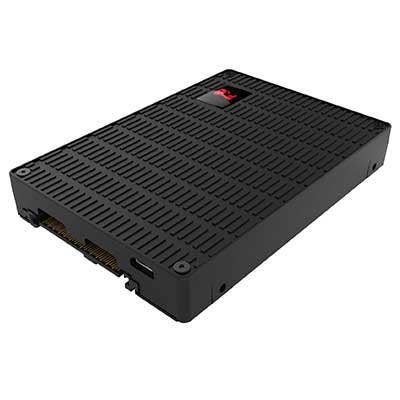
Kingston Technology DCU1000 (Data Center U.2 1000)
The DCU1000 is Fountain Valley, Calif.-based Kingston’s upcoming PCIe NVMe U.2 SSD. It is targeted at the increasing numbers of mainstream servers launching with U.2 NVMe SSD slots which allows serviceability and hot-plugging in servers. DCU1000 integrates four physical SSDs mounted on a single device that presents itself to the host as four individual SSDs. This quickly enables SSD device scaling for sequential speed and IOPS performance. The Gen 3.0 x4 offering provides up to 3,600 MBs per second read and write performance, and up to 850,000 IOPS. It is scheduled to ship later this year in 800-GB, 1.6-TB, and 3.2-TB capacities.
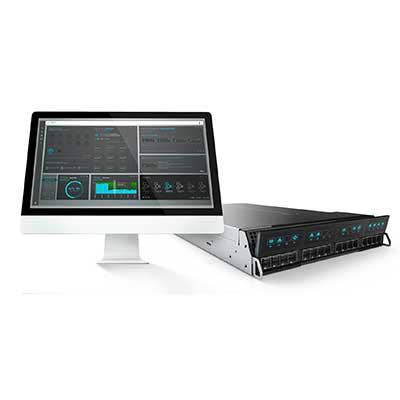
Liqid Grid and the Liqid Command Center
Liqid is a Lafayette, Colo.-based startup developer of PCIe-based fabric switches and software targeting the development of complete, disaggregated composable infrastructure solutions for the datacenter. The company's hardware and software platform allows users, either manually or through policy-based automation, to quickly manage and configure bare-metal servers with pools of compute, networking, storage, and graphics processing all across PCIe. The Liqid Command Center software delivers a unified API with software-defined intelligence, while the Liqid Grid PCIe switches, bays, and carriers enable disaggregation of industry standard server components.
Initial vertical targets include DevOps, infrastructure-as-a-service, high-performance computing, and media and entertainment. General availability is slated for early first quarter 2018.
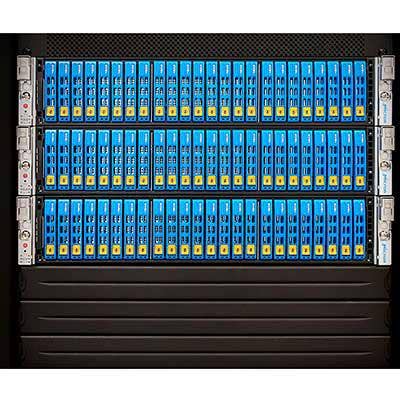
Micron Technology SolidScale with 9200 Series SSDs
The Micron SolidScale platform from Boise, Idaho-based Micron is an intelligent infrastructure platform designed to provide applications with the raw performance of local storage with the flexibility, manageability, and scalability of traditional SAN offerings. Combined with Micron’s latest 9200 series NVMe SSDs, SolidScale provides over 250 TBs of capacity per node and scales to over five petabytes of NVMe SSD capacity per rack. These new high-performance NVMe drives accelerate applications by delivering read transfer speeds of up to 5.5 GBs per second and write transfer speeds of up to 3.5 GBs per second.
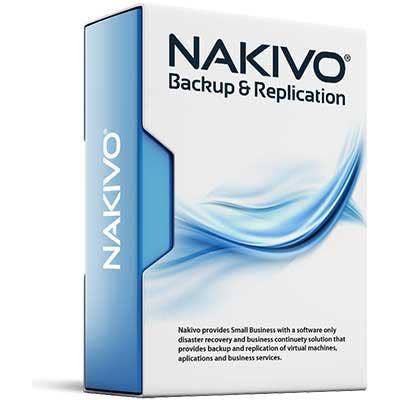
Nakivo Backup & Replication 7.2
Nakivo Backup & Replication from Campbell, Calif.-based Nakivo targets the protection of data in VMware, Hyper-V, and AWS EC2 environments. It is available as a stand-alone application or can be combined with NAS appliances from Asustor, Qnap, Synology, or Western Digital to form a virtual machine backup appliance.
Version 7.2, introduced at VMworld, can be installed on Windows or Linux, or deployed as a pre-configured VMware virtual appliance or AWS Amazon Machine Image in under 1 minute. It provides native, agentless, image-based, application-aware backup and replication for VMware, Hyper-V, and AWS virtual machines, with increased backup speeds; reduced backup sizes; instant recovery of virtual machines and files as well as Exchange, SQL, and Active Directory objects; and instant backup verification with screenshots of test-recovered virtual machines.
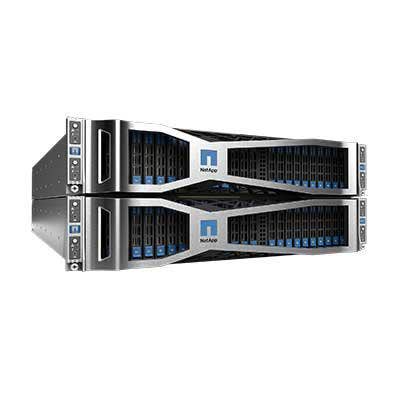
NetApp HCI
NetApp, Sunnyvale, Calif., in June introduced its first hyper-converged infrastructure offering, the NetApp HCI, which is based heavily on NetApp's SolidFire all-flash storage technology. The NetApp HCI is targeted at enterprises, midsized businesses, and service providers looking to consolidate workloads, scale in ways that won’t strand resources, and provide greater performance for next-generation applications.
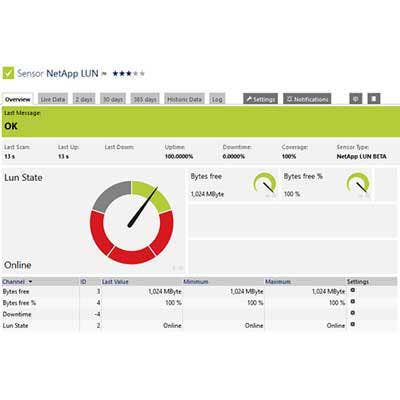
Paessler's NetApp Sensors for PRTG Network Monitor
Nuremberg, Germany-based Paessler used VMworld 2017 to introduce eight new NetApp sensors for its PRTG application. PRTG is a network monitoring offering that provides customers with a comprehensive, real-time view of their network, systems, applications and devices on-premises, off-premises, and in hybrid environments. Eight new NetApp sensors for the PRTG Network Monitor feed real-time data into PRTG’s dashboards to let IT teams monitor their NetApp infrastructure at any time and to be alerted when any thresholds of their choosing, such as pre-determined performance levels, are met. The NetApp sensors monitor a variety of variables from read-and-write speeds to temperature status and available capacity for snapshots. Additional NetApp sensors are slated to be added over time.
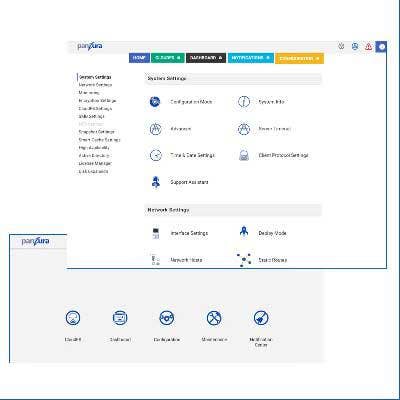
Panzura Inside 2.0 with the Panzura Freedom 7 VM
Panzura Inside 2.0 is a program from Campbell, Calif.-based Panzura that can turn 10 TBs of flash storage into one petabyte of unstructured storage in the cloud. It works with customers' existing hyper-converged infrastructure systems or all-flash arrays to replace traditional NAS appliances with high-performance structured and unstructured data storage. Version 2.0 features the new Panzura Freedom 7 virtual machine (VM) with 10X performance and scale. A new starter bundle can be downloaded and deployed in minutes on existing hyper-converged infrastructure and all-flash arrays to turn local flash storage into unlimited, high-performance cloud storage for unstructured data. Supported systems include Nimble, Nutanix, Pure, SimpliVity, Tintri, and Tegile.
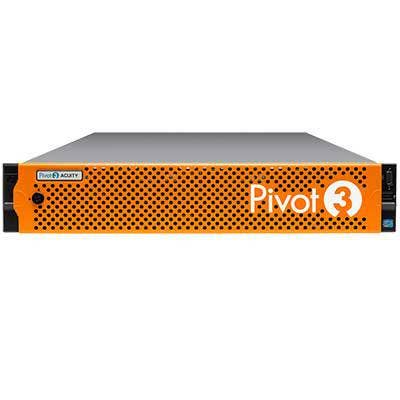
Pivot3 Acuity
Acuity from Austin, Texas-based Pivot3, unveiled in April, is claimed to be the industry’s first priority-aware and policy-based hyper-converged infrastructure offering with NVMe PCIe flash performance, giving customers the ability to consolidate multiple mixed-application workloads onto a single infrastructure. Acuity offers policy-based simplicity and priority-aware intelligence thanks to its quality of service engine integrated with multi-tier architecture to provide pre-defined performance and user-defined data protection policies to meet service level agreements in mixed workload environments, automatic workload prioritization and real-time multi-tier data placement, self-management, and a policy scheduler. Acuity’s policy-based management engine was optimized for NVMe PCIe flash performance for such workloads as databases, enterprise applications, business analytics, and virtual desktop infrastructure.
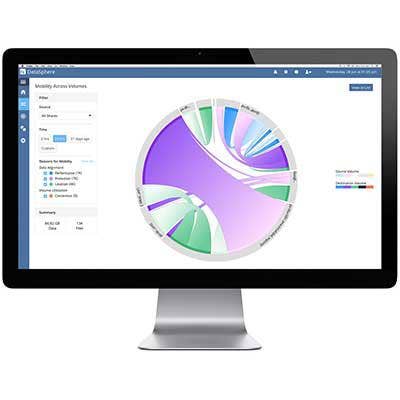
Primary Data DataSphere 2.0
Los Altos, Calif.-based Primary Data claims its new DataSphere 2.0 software combines metadata management and machine learning to move the right data to the right place at the right time across a global namespace, automatically and without application disruption. DataSphere makes heterogeneous data stores simultaneously available to all applications, enabling enterprises operating at petabyte scale to manage billions of files, automate data migration, integrate the cloud, and scale-out NAS performance while taking advantage of infrastructure investments on a per-client, per-file basis.
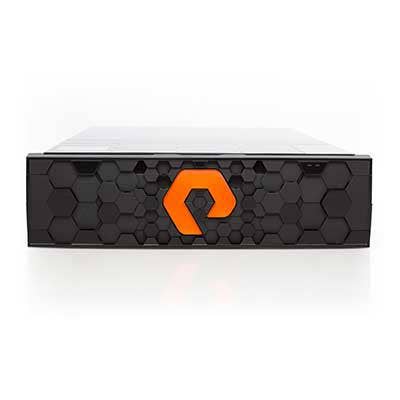
Pure Storage FlashArray//X
Mountain View, Calif.-based Pure Storage claims its new FlashArray//X to be the first enterprise-class all-NVMe flash array. FlashArray//X targets high-performance web-scale applications and data analytics with the latest high-performance, high-density NVMe technology. With the FlashArray//X, Pure Storage introduced a new native NVMe controller, new in-house-designed DirectFlash NVMe flash storage modules, and a new DirectFlash software designed to manage NVMe storage.
FlashArray//X is targeted at mission-critical databases, top-of-rack flash deployments, and tier-one application consolidation. With Pure Storage's Evergreen model, any FlashArray can be fully upgraded, nondisruptively, to FlashArray//X with zero performance degradation.
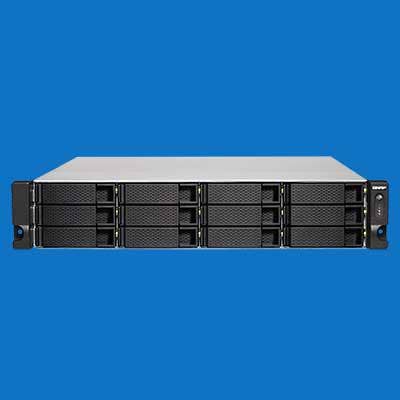
QNAP Systems TS-1273U-RP
The TS-1273U-RP is Taiwan-based QNAP’s mid-market rack-mount NAS targeted primarily channel partners upgrading corporate data center infrastructures from older 12-drive systems. They are built around quad-core AMD R-series processors and up to 64 GBs of DDR4 RAM, and include 12 bays for 3.5-ingh or 2.5-inch drives, dual 10GbE ports, Gbit LAN with fail-over and load-balancing, USB 3.0 ports, and redundant power supplies. It features full Citrix, VMware, and Windows Server 2012R2 support along with the embedded QTS operating system to work with a full complement of business-critical apps for storage management, backup, remote data replication, and more.
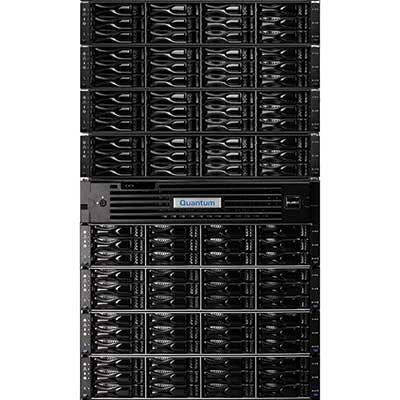
Quantum DXi Deduplication Appliances with Veeam Data Mover
Quantum’s DXi deduplication appliances are now integrated with Veeam’s Data Mover service, providing support for such Veeam capabilities as instant virtual machine recovery and synthetic full backup creation, all while providing some of the best data reduction capabilities in the industry. Quantum said the DXi is the only in-line deduplication appliance to take advantage of the Veeam Data Mover service.
San Jose, Calif.-based Quantum also introduced a new converged tape appliance for Veeam, the Scalar iBlade, which it said eliminates the need for an external physical tape server.
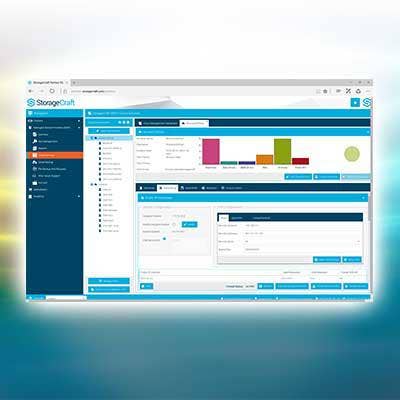
StorageCraft $100K Recovery Guarantee Benefit
Rather than use VMworld for yet another storage product intro, StorageCraft of Draper, Utah chose instead to introduce its $100K Recovery Guarantee. This is an automatic benefit for all qualified StorageCraft partners. Under the guarantee, if a qualified partner’s machines cannot be virtualized during a true failover event, StorageCraft will compensate the partner with up to $100,000. If a qualified partner experiences a true disaster and cannot successfully virtualize an affected machine, that partner is eligible for compensation.
There are caveats, of course: the partner must report the issue to StorageCraft's support team within 24 hours of the disaster, and the support team is unable to quickly resolve the issue.
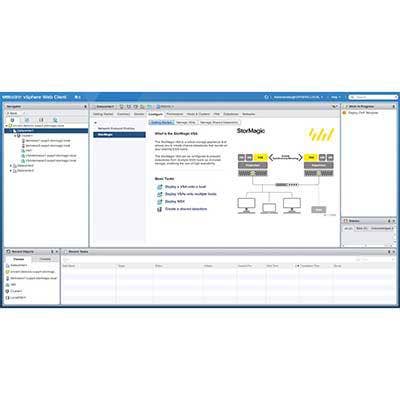
StorMagic SvSAN Automated Storage Caching
SvSAN from Bristol, U.K. is a two-server virtual SAN offering targeting small and midsize enterprises and distributed IT environments. Its latest Automated Storage Caching capability increases the overall performance of users' hyper-converged infrastructure appliances by using added low-cost server memory as a read-ahead cache and allocating a portion of SSD capacity for write-back and read-ahead caching, all managed by SvSAN. Intelligent algorithms track frequency of use and automatically place data on the most appropriate cache. Those algorithms can also uncover hard-to-find sequential reads when multiple virtual machines are using the same storage system. SvSAN is VMware Ready and managed via vCenter.
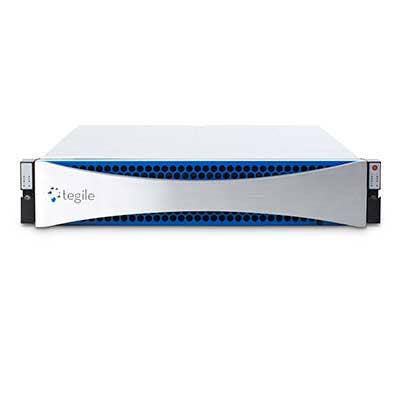
Tegile Systems IntelliFlash N-series NVME Arrays
The N Series array from Newark, Calif.-based Tegile, which during VMworld was acquired by Western Digital, is a new line of arrays based completely on high-performance NVMe all-flash technology. Tegile introduced two models in its N-series. The 5200 was designed to provide a complete capacity write per day, and provides about 1.5 million IOPs of performance. The 5800 is targeted at up to three complete capacity writes per day with up to 3 million IOPs. Capacity of the 5200 and 5800 arrays can be expanded via an additional array or by the addition of external SAS-based storage shelves. They include multiple protocols, data reduction, data protection, automated data healing, high availability, and more.
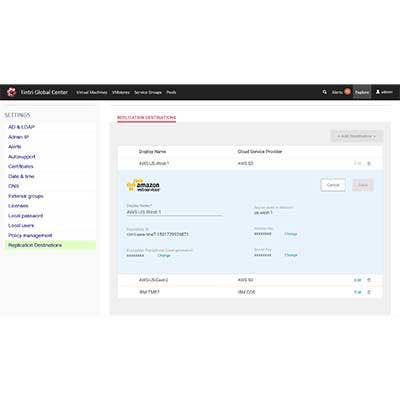
Tintri Cloud Connector
The Tintri Cloud Connector from Mountain View, Calif.-based Tintri tightly integrates the Tintri Enterprise Cloud with Amazon Web Services and IBM cloud resources, creating the foundation for hybrid cloud services. For example, customers can use AWS for the data protection, archive, and disaster recovery of their mission-critical on-premises applications while restoring applications and data in a single click to their Tintri Enterprise Cloud. The Tintri Cloud Connector uses the Tintri Connect architecture which abstracts storage at the virtual machine level and container level for fast recovery times and flexibility.
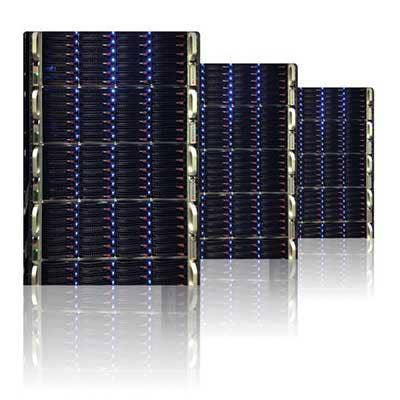
Zadara Storage Cloud with VMware Fibre Channel Support
The Zadara Storage Cloud from Irvine, Calif.-based Zadara Storage is a service for channel partners looking to offer clients storage that is as functional, reliable, and secure as traditional enterprise storage with the flexibility of cloud storage. The Zadara Storage Cloud, which during VMworld received VMware HCL (hardware compatibility list) certification for Fibre Channel connectivity, features the company's VPSA storage arrays for on-demand NAS, SAN, and object storage for AWS S3-compatible and Swift-compatible storage, and lets partners offer storage on a pure operating expense business model with guaranteed margins and no up-front costs.
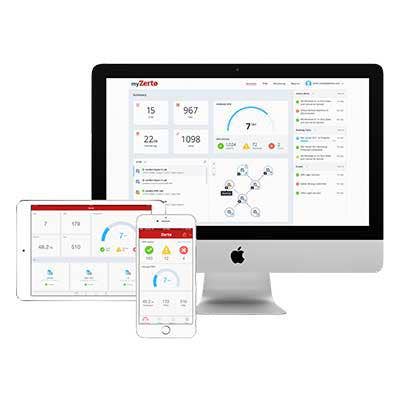
Zerto Virtual Replication 5.5
Boston-based Zerto’s release of Zerto Virtual Replication 5.5 (ZVR 5.5) focuses on advancing hybrid cloud resilience and application mobility capabilities. ZVR 5.5 introduces Microsoft Azure bi-directional replication to provide replication and recovery of enterprise-class applications both to and from cloud environments. The new offering also improves upon the 5.0 generation of the product with up to 5x faster AWS recovery for easier utilization of the public cloud for disaster recovery or for testing and development in a near real-time replication environment. The ZVR 5.5 also comes with a new Zerto Analytics platform which provides real-time and historical analytics on the status and health of multi-site, multi-cloud environments.